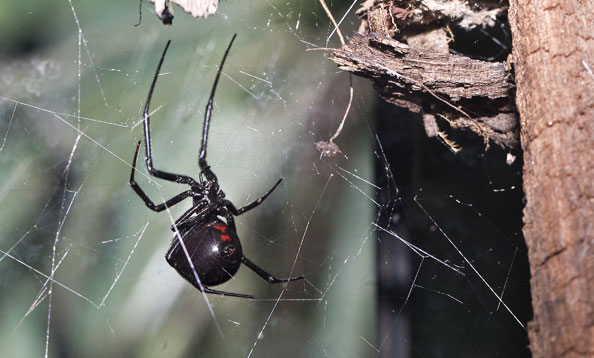Black Widow Spider
Latrodectus hesperus

Fascinating Facts
- The females of the only ones that bite and this is for self defense only.
- The venom is neurotoxic and is reported to be fifteen times as poisonous is that of a rattlesnake. Symptoms include a painful tightening of the abdominal, wall muscles, increased blood pressure and body temperature nausea localized edema, asphyxia and convulsions. Only 1300 bites have been reported from 1716 to 1943.
Physical Characteristics
Females (3.5 cm and 25g) are black with large round abdomens while males (1.25 cm) are usually light yellow red or brown on abdomen and have longer legs. The hour glass is usually red but not always visible.
Chelicerates, fangs are perpendicular to body line. Duct from a poison gland opens from the base of each fang. The mouth and jaw are on the underside of the head. The body is supported by 8 long narrow legs.
Habitat/Diet
It is found in Western TX, OK and Kansas City north to Canada and west to the Pac. Coast. Usually in tropical timber and arid zones.
In the wild, they can eat any small creature that the web can hold. At the Zoo, they are fed one cricket a week.
Social Behavior
These spiders are shy and nocturnal, and usually stay hidden inside of the web unless frightened. The belly is always facing the upward position.
Western black widow spiders spin webs that do not take on a definite shape or form. The webs vary in location, but more so in appearance. The silk that creates the web is made up of a liquid from the large abdominal glands.
Status In The Wild
The black widow spider is common and not endangered.
Other
The black widow spider can be found at the Insect Zoo.
